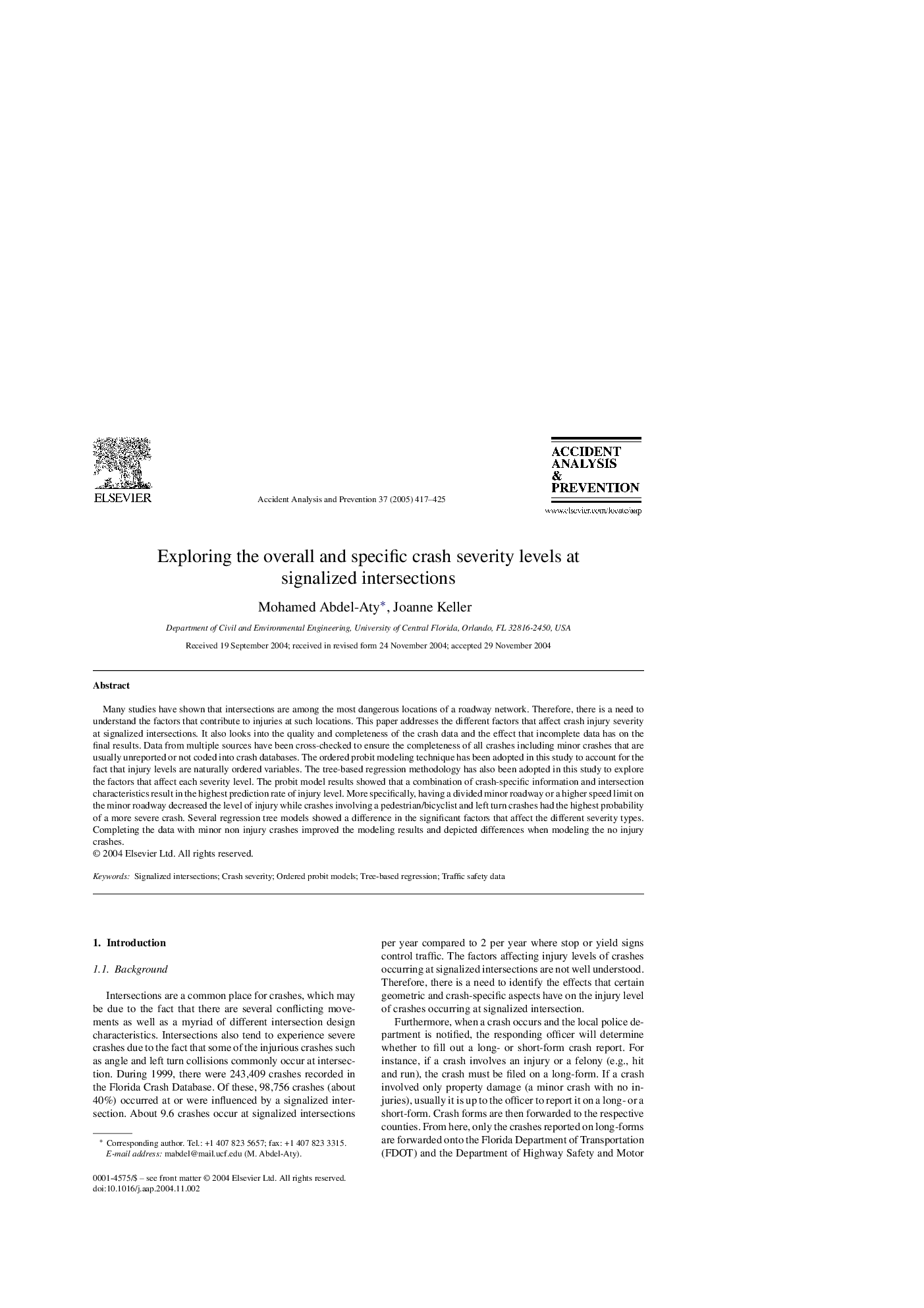| Article ID | Journal | Published Year | Pages | File Type |
|---|---|---|---|---|
| 10371493 | Accident Analysis & Prevention | 2005 | 9 Pages |
Abstract
Many studies have shown that intersections are among the most dangerous locations of a roadway network. Therefore, there is a need to understand the factors that contribute to injuries at such locations. This paper addresses the different factors that affect crash injury severity at signalized intersections. It also looks into the quality and completeness of the crash data and the effect that incomplete data has on the final results. Data from multiple sources have been cross-checked to ensure the completeness of all crashes including minor crashes that are usually unreported or not coded into crash databases. The ordered probit modeling technique has been adopted in this study to account for the fact that injury levels are naturally ordered variables. The tree-based regression methodology has also been adopted in this study to explore the factors that affect each severity level. The probit model results showed that a combination of crash-specific information and intersection characteristics result in the highest prediction rate of injury level. More specifically, having a divided minor roadway or a higher speed limit on the minor roadway decreased the level of injury while crashes involving a pedestrian/bicyclist and left turn crashes had the highest probability of a more severe crash. Several regression tree models showed a difference in the significant factors that affect the different severity types. Completing the data with minor non injury crashes improved the modeling results and depicted differences when modeling the no injury crashes.
Related Topics
Physical Sciences and Engineering
Chemical Engineering
Chemical Health and Safety
Authors
Mohamed Abdel-Aty, Joanne Keller,
